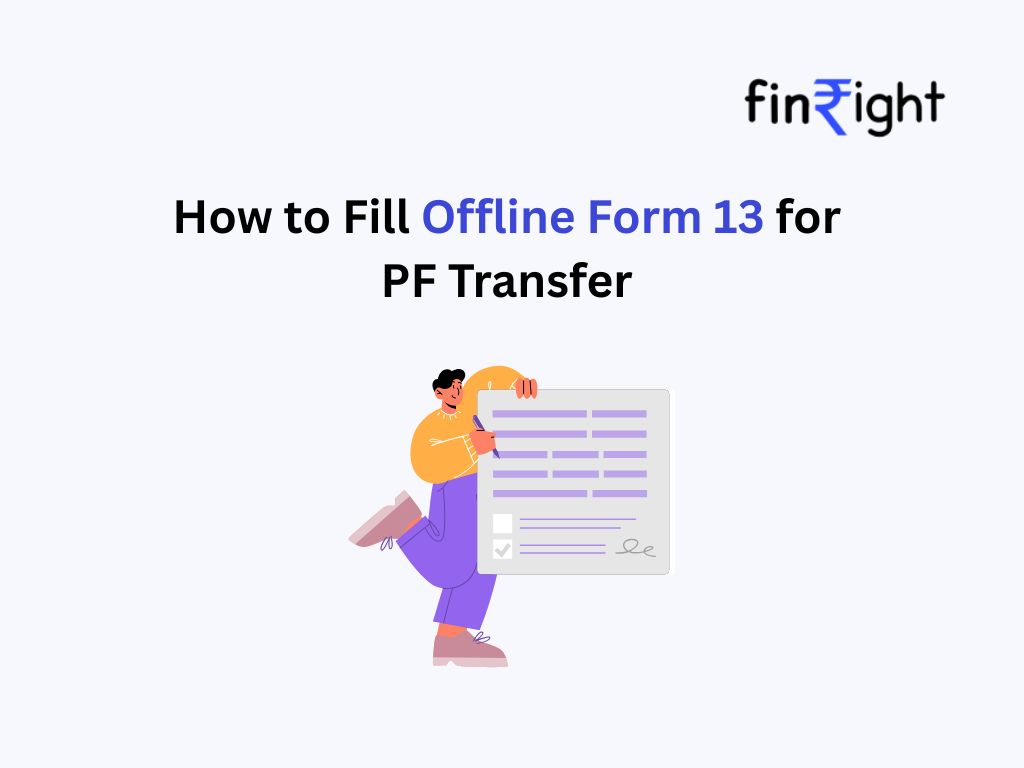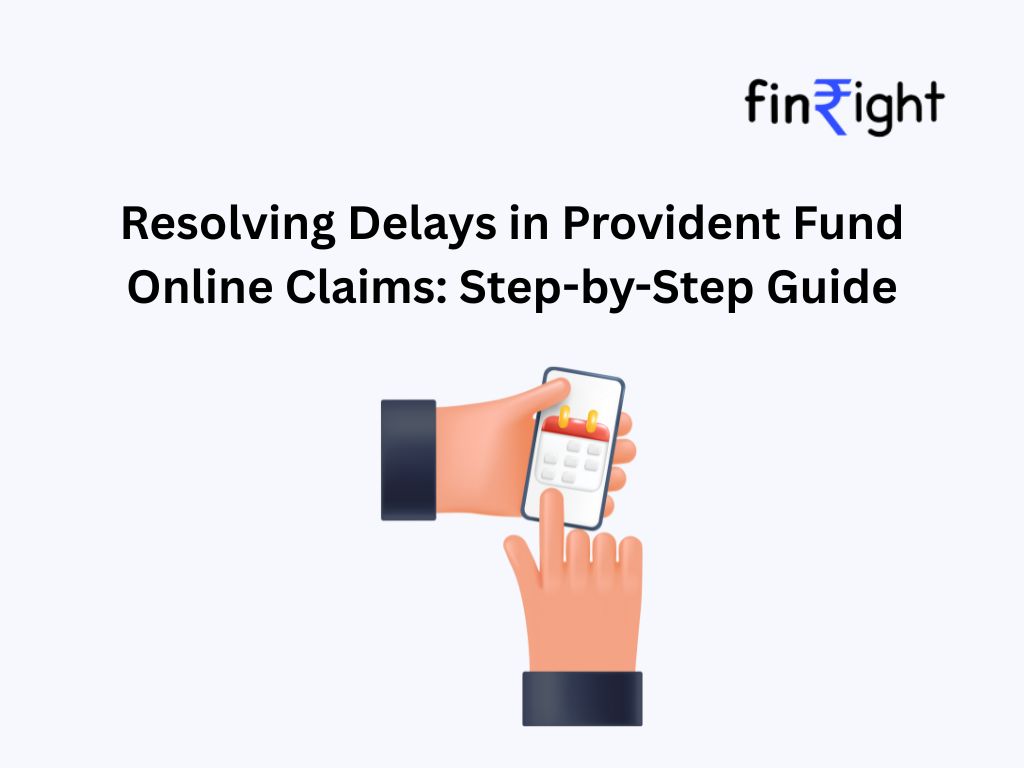For most salaried Indians, the Employees’ Provident Fund (EPF) is one of the most reliable ways to build long-term savings. So when your EPF claim status shows as “Pending” or “Under Process”, it’s natural to feel anxious. However, in most cases, this status doesn’t indicate rejection or error it simply means that your claim is under one of several verification stages within the EPFO system.
Understanding what “Pending” actually means, and why it appears, can help you take the right steps to resolve it faster.
How to Check Your EPF Claim Status
The Employees’ Provident Fund Organisation (EPFO) allows you to check your claim status online in just a few clicks. Here are the official methods:
1. Through the EPFO Member Portal
- Visit www.epfindia.gov.in.
- Go to ‘For Employees’ → ‘Know Your Claim Status’.
- Log in using your UAN (Universal Account Number) and password.
- Select the “Track Claim Status” option under Online Services.
- The screen will show your claim number, submission date, and current status such as Pending with Employer, Pending at Field Office, Under Process, Settled, or Rejected.
2. Using the UMANG App
- Open the UMANG App (Unified Mobile Application for New-age Governance).
- Go to EPFO → Employee Centric Services → Track Claim.
- Enter your UAN and OTP sent to your registered mobile number.
- The app instantly displays your latest claim status.
These two are the only official EPFO-endorsed ways to track your claim. Any delay or “pending” tag you see here is directly linked to how your employer or EPFO office is processing your request.
What Does ‘Pending’ or ‘Under Process’ Mean?
A “Pending” claim is not a rejection. It means your request is currently moving through the three-stage EPFO approval process:
- Employer Verification: Your employer digitally signs and forwards the claim to EPFO.
- Field Office Verification: EPFO staff cross-verify details like service period, KYC, and bank account.
- Payment Processing: Once verified, the claim is queued for payment to your registered bank account.
If the system shows “Pending”, it’s stuck at one of these stages — and identifying which one can help you act accordingly.
Common Reasons Why EPF Claim Status Shows as “Pending”
1. Employer’s Digital Attestation Not Completed
Every withdrawal or transfer claim needs to be digitally attested by your employer using their Digital Signature Certificate (DSC) or e-Sign.
If the employer hasn’t completed this verification, your claim remains “Pending with Employer”.
This usually happens when HR teams delay reviewing the claim request on the employer portal. Once the employer signs digitally, the status moves to “Pending at Field Office”.
2. Missing or Mismatched KYC Details
EPFO requires your Aadhaar, PAN, and bank details to be fully verified before processing a claim.
If there’s even a minor mismatch such as different spellings in your name, an unseeded PAN, or an inactive bank account the system auto-halts the process.
In such cases, log in to the UAN Member Portal and ensure your KYC status shows “Approved by Employer”.
3. Date of Exit or Previous Service Not Updated
When you leave a company, your employer must update your Date of Exit (DOE) in the EPFO system.
If this isn’t done, your claim — especially Form 19 (Final Settlement) or Form 10C (Pension Withdrawal) — cannot be processed.
Similarly, if your previous employment’s Member ID wasn’t transferred properly, the new employer’s contribution may not link to your full service history, leaving the claim “Pending at Field Office”.
4. Delay at the Regional / Field Office Level
After your employer attests the claim, it’s routed to the regional EPFO office.
Here, officials verify the service period, cross-check employer records, and approve payment batches.
When claim volumes spike (especially after fiscal year-end or new portal rollouts), some requests remain “Pending at Field Office” for a few weeks.
The status changes automatically once verification is complete.
5. Missing or Incorrect Supporting Documents
Claims can also remain pending if the attached documents such as Form 19, Form 31, or bank proof are incomplete, illegible, or mismatched with EPFO records.
For instance, uploading a joint bank account without being the primary holder may trigger a hold.
EPFO’s system flags these discrepancies for manual review, delaying the claim.
6. Technical Glitches or Aadhaar/Bank Validation Delays
EPFO’s system frequently syncs with UIDAI and banking networks for Aadhaar and bank verification.
During high server load or technical downtime, the claim may temporarily show “Pending” even though all details are correct.
In most such cases, the status resolves automatically within a few days.
How Long Does EPF Claim Processing Take?
According to EPFO’s official circulars, the standard claim settlement time is 20 working days from the date of submission.
However, this timeline depends on:
- Whether the employer has promptly attested the claim.
- The accuracy of KYC and DOE data.
- The workload at your regional EPFO office.
If your claim stays “Pending” for over 20 days, you can raise a grievance through the official EPFiGMS portal.
How to Resolve or Avoid a Pending Claim
Here’s how to fix most delays effectively:
✅ Verify KYC: Ensure Aadhaar, PAN, and Bank Account are approved in your UAN profile.
✅ Coordinate with Employer: Ask HR to confirm they’ve digitally signed the claim.
✅ Check Date of Exit: Confirm your DOE is correctly updated on the portal.
✅ Avoid Name Mismatch: Use the exact name as per Aadhaar and PAN.
✅ Raise Grievance if Delayed: Visit https://epfigms.gov.in and submit your UAN, claim ID, and grievance type under “Pending Claim”.
Keep digital copies of your passbook, Form 3A, and Annexure K ready they may be needed for verification at the EPFO office.
Frequently Asked Questions (FAQs)
Q1. How long does it take for an EPF claim to be approved?
EPFO usually processes online claims within 20 working days if all data and documents are correct.
Q2. Can I withdraw PF without employer approval?
Yes. If your Aadhaar is seeded and verified, and your KYC is complete, employer approval is not required for online withdrawals.
Q3. My claim shows “Under Process” for weeks. What should I do?
First, contact your employer to ensure attestation is done. If already approved, raise a grievance through EPFiGMS.
Q4. What causes a transfer claim to remain pending?
A missing Date of Exit or unlinked old Member ID often delays transfers. Ensure your service record is consolidated via Annexure K before reapplying.
Conclusion
A “Pending” status on your EPF claim doesn’t mean rejection it simply means the system is waiting for one or more approvals.
Whether it’s a missing KYC link, unapproved employer attestation, or an EPFO queue, most issues can be resolved by verifying your data and coordinating with your employer.
By regularly checking your EPF records, ensuring your KYC is updated, and using the official grievance portal when needed, you can make the claim process faster, smoother, and stress-free.
Common Reasons Why Your EPF Claim Status Shows ‘Pending’ And What You Can Do About It
If you want assistance with your PF Claims connect with Finright.





